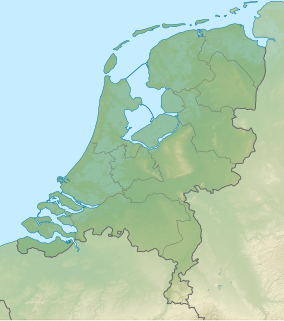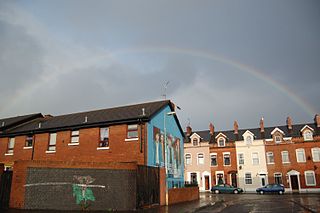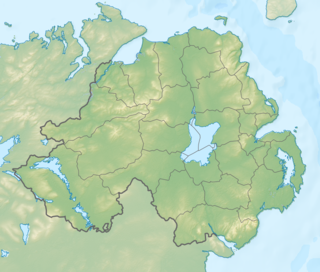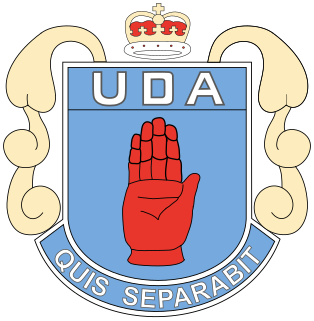
The Red Hand Commando (RHC) is a small secretive Ulster loyalist paramilitary group in Northern Ireland, which is closely linked to the Ulster Volunteer Force (UVF). Its aim was to combat Irish republicanism – particularly the Irish Republican Army (IRA) – and to maintain Northern Ireland's status as part of the United Kingdom. The Red Hand Commando killed 13 people during The Troubles, 12 civilians and one of its own members. However, it is known to have carried out assassinations and allow other loyalist groupings to claim in their name. It is named after the Red Hand of Ulster, and is unique among loyalist paramilitaries for its use of an Irish language motto, Lamh Dearg Abu, meaning 'red hand to victory'.
This is a timeline of actions by the Ulster Volunteer Force (UVF), an Ulster loyalist paramilitary group since 1966. It includes actions carried out by the Red Hand Commando (RHC), a group integrated into the UVF shortly after their formation in 1972. It also includes attacks claimed by the Protestant Action Force (PAF), a covername used by the UVF. Most of these actions took place during the conflict known as "the Troubles" in Northern Ireland.
The Troubles in Ardoyne lists incidents during the Troubles in the Ardoyne district of Belfast, Northern Ireland.
The Night of the Long Knives is the name given to the night in Belfast of 31 October 1992, when the Provisional IRA's Belfast Brigade launched a large military operation to wipe out the IPLO Belfast Brigade, who most Irish republicans in the city felt were becoming an embarrassment to Irish republicanism due to their involvement in drug dealing, criminality and internal Irish republican feuds.

The Provisional IRA carried out two separate attacks on the same day on 1 May 1988 against British military personnel in the Netherlands which resulted in the deaths of three RAF members and another three being injured. It was the worst attack suffered by the British security forces during The Troubles from 1969 to 1998 on mainland Europe.
The Rose & Crown Bar bombing was a bomb attack carried out against a Catholic-owned pub in Belfast. The attack was carried out by the loyalist paramilitary group the Ulster Volunteer Force (UVF) just less than two weeks before the start of the Ulster Workers' Council strike of May 1974 which brought down the Sunningdale power sharing agreement and just 15 days before the UVF carried out the Dublin and Monaghan bombings which killed 34 and injured 300 people, the highest casualty rate in a single day during The Troubles in either Ireland or Britain.
On 2 October 1975, the loyalist paramilitary group the Ulster Volunteer Force (UVF) carried out a wave of shootings and bombings across Northern Ireland. Six of the attacks left 12 people dead and around 45 people injured. There was also an attack in a small village in County Down called Killyleagh. There were five attacks in and around Belfast which left people dead. A bomb which exploded in Coleraine left four UVF Volunteers dead. There were also several other smaller bombs planted around Northern Ireland but other than causing damage they didn't kill or injure anyone.
On 23 October 1971 undercover soldiers from the British Army shot dead three unarmed Catholic civilians in disputed circumstances in Newry.

In the late hours of 3 February and the early hours of 4 February 1973, six men, all of whom were Catholics, were shot and killed in the New Lodge area of north Belfast, four of them were shot dead at the junction at Edlingham Street by British Army snipers, the other two men were shot dead by the Ulster Defence Association (UDA). Irish Nationalists and Republicans believe that collusion took place between the British security forces and Loyalist paramilitaries in the shootings. The six men who were killed became known as "The New Lodge Six".
The 1975 Conway's Bar attack was a failed gun and bomb attack by the Loyalist Ulster Volunteer Force (UVF) paramilitary group. On 13 March 1975 a unit from the UVF's Belfast Brigade attempted to bomb the Catholic-owned Peter Conway's bar on the Shore Road in Greencastle, Belfast. The bomb exploded prematurely, killing a Catholic civilian woman and one of the UVF bombers.

The Strand Bar Bombing was a gun and bomb attack carried out by the Loyalist Paramilitary organisation Ulster Volunteer Force (UVF) in Belfast in 1975. The blast destroyed most of the building and killed six civilians and injured about 50 more.

The Central Bar bombing was a bomb attack on a pub in the mainly Protestant town of Gilford near Portadown in County Down in Northern Ireland on 31 December 1975. The attack was carried out by members of the Irish National Liberation Army (INLA) using the covername " People's Republican Army". Three Protestant civilians were killed in the bombing.

On the 28 March 1991 the Loyalist paramilitary organization the Ulster Volunteer Force (UVF) carried out a gun attack on a mobile shop in the Drumbeg estate in the town of Craigavon in County Armagh shooting dead three Catholic civilians. Two of those killed were teenage girls.
The following is a timeline of Northern Irish conflict actions which took place in the Republic of Ireland between 1969 and 1998. It includes Ulster Volunteer Force bombings such as the Dublin and Monaghan bombings in May 1974, and other Loyalist bombings, the last of which was in 1997. These attacks killed dozens of people. Actions by Irish Republicans include deadly bombings, prison escapes, kidnappings, and gun battles between the Gardaí (police) and the Irish Defence Forces against Republican gunmen from the Irish National Liberation Army, the Provisional Irish Republican Army, and a socialist-revolutionary group, Saor Éire. These attacks killed a number of civilians, police, soldiers, and Republican terrorists.

The Red Lion Pub bombing was a bomb attack that happened on 2 November 1971, when a bomb planted by the Provisional IRA's Belfast Brigade exploded in the Red Lion pub in Belfast which killed three people and injured about 30 others.

The 1991 Craigavon killings took place on the 14 November 1991 when the Mid-Ulster Brigade of the Ulster Volunteer Force (UVF) shot dead three civilians at the Carbet Road-Carn Road junction near Craigavon, County Armagh, Northern Ireland, on their way home from work at a forklift factory just outside Lurgan.

The Charlemont pub attacks were co-ordinated militant Loyalist attacks on two pubs in the small village of Charlemont, County Armagh, Northern Ireland, carried out by the Ulster Volunteer Force (UVF) on the 15 May 1976. The attacks have been attributed to the Glenanne gang which was a coalition of right-wing Loyalist paramilitaries and subversive members of the British security forces.
The Imperial Hotel bombing was a no-warning car bombing carried out by the Ulster Loyalist paramilitary group the Ulster Volunteer Force (UVF) on the Imperial Hotel situated along the Cliftonville Road close to the Antrim Road in Belfast.

The Store Bar shooting was a mass shooting that occurred on the 25 June 1976 in the late evening when an armed group of men calling themselves the Republican Action Force walked into The Store Bar on Lyle Hill Road in Templepatrick, County Antrim.

On the 24 November 1991 the Provisional IRA (IRA) exploded a home made bomb along the Crumlin Road inside of the Crumlin Road Prison in the Ulster Loyalist wing of the prison killing two Loyalist prisoners, one from the Ulster Freedom Fighters (UFF) and one from the Ulster Volunteer Force (UVF). This came at the height of a debate on the issues of desegregation between Loyalist and Irish Republican prisoners.














